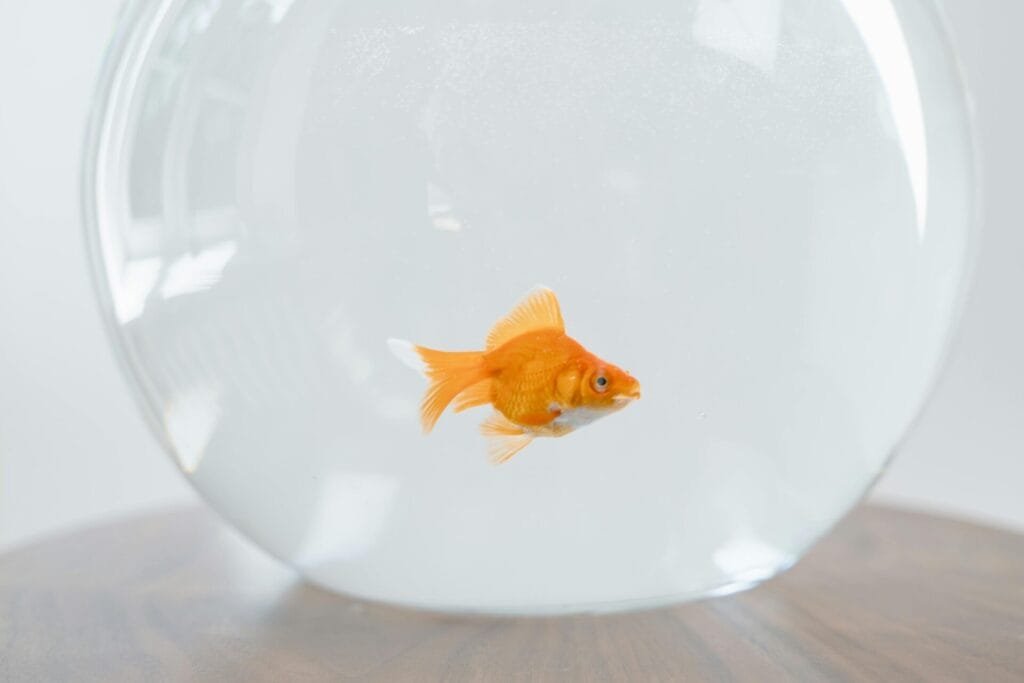Betta fish, also known as Siamese Fighting Fish, are fascinating creatures known for their striking colors and graceful swimming. However, beneath their beauty lies a natural instinct for aggression that sets them apart from other aquarium fish.
Have you ever wondered why betta fish fight? What drives their aggressive behavior? In this article, we will delve into the intriguing world of betta fish fighting to provide you with valuable insights.
Betta fish aggression is primarily observed among male bettas, although females can also display aggressive tendencies under certain circumstances. Understanding the reasons behind their fighting behavior is key to creating a harmonious environment for these captivating aquatic pets.
Causes of Betta Fish Fighting
Understanding the causes of betta fish fighting is crucial for betta owners to create a harmonious habitat for their fish. Several factors contribute to this aggressive behavior:
- Territorial instinct: Betta fish are possessive of their habitat and may attack intruders, including other males. They fiercely guard their territory and resources, such as food, shelter, and mating areas.
- Food competition: Betta fish are competitive eaters due to scarcity in their natural environments. Limited food sources can trigger fights as they vie for sustenance.
- Nest and egg protection: Male bettas are highly invested in reproduction and will fight vigorously to protect their nests and eggs. This instinctual behavior ensures the survival of their progeny.
- Environmental stressors: Changes in water quality, tank design, or improper maintenance can create stressful conditions for betta fish. These stressors can trigger aggression and fighting among male and female bettas alike.
It is important to note that betta fish fights can also occur during mating and when defending eggs. While female bettas are generally less aggressive towards each other and can be housed together, conflicts may arise in certain situations.
To gain a better understanding of the causes of betta fish fighting, refer to the table below:
| Cause | Description |
|---|---|
| Territorial instinct | The instinctive need to protect their territory and resources. |
| Food competition | The scarcity of food in their natural habitats triggers intense competition for limited resources. |
| Nest and egg protection | Males fiercely defend their nests and eggs as part of their reproductive behavior. |
| Environmental stressors | Changes in water quality, tank design, or poor maintenance can lead to stress and subsequent aggression. |
https://www.youtube.com/watch?v=02eI5yfU3fU
Understanding the causes behind betta fish aggression allows betta owners to take appropriate measures to minimize fighting and create a peaceful environment for their beloved fish.
Preventing Betta Fish Fights
To ensure the well-being of your betta fish and prevent fights, it’s important to follow proper care guidelines and create an optimal tank environment. Here are some key strategies:
Separate Tanks for Male Bettas
Male bettas are highly territorial and prone to aggression towards other males. Providing each male betta with its own tank is crucial to prevent fights. This allows them to establish their own territory and reduces the chances of confrontation.
Use Visual Barriers
When housing multiple male bettas in the same room or area, it’s essential to use visual barriers to prevent them from seeing each other. This can be achieved by placing aquarium plants, decorations, or tank dividers between the tanks. A lack of visual contact helps minimize aggression and reduces the risk of fights.
Avoid Mirrors and Reflective Objects
Bettas can become aggressive towards their own reflections, mistaking them for rival males. Therefore, it’s important to avoid adding mirrors or other shiny objects to the tank. This simple precaution can help prevent unnecessary fights and keep your bettas calm and stress-free.
Female Betta Sororities
Female bettas, unlike males, are generally compatible with each other and can be kept together in a sorority. However, it’s essential to allocate enough space for each fish and provide adequate hiding spots and territories. Female bettas still have a hierarchy, and fights can occur if they feel overcrowded or if there is a lack of resources. It’s recommended to have a minimum tank size of 10 gallons for a sorority and monitor their interactions closely.
Research Fish Compatibility
If you plan to add other fish species to a betta tank, it’s crucial to research their compatibility with bettas. Some fish species may provoke aggressive behavior in bettas or become targets of aggression. Always consider the temperament, size, and swimming levels of potential tank mates to ensure a peaceful coexistence.
Proper Tank Setup
A well-designed tank setup can contribute to reducing betta fish fights. Offering plenty of hiding spots, plants, and territories creates a more natural environment and decreases stress levels. Providing a suitable habitat for each betta fish helps them establish their own space and minimizes the likelihood of fights.
Regular Monitoring
Even with the best preventive measures in place, it’s important to regularly monitor your bettas for any signs of aggression or stress. Pay attention to behaviors such as gill flaring, fin nipping, or prolonged hiding periods. If conflicts arise, swift intervention may be necessary, such as separating the aggressive fish or reassessing tank arrangements.
By following these strategies and providing proper care, you can create a harmonious environment for your betta fish, reducing the risk of fights and ensuring their well-being.
Signs of Betta Fish Aggression
When it comes to betta fish, aggression is a common behavior that can indicate underlying issues or conflicts. It’s important for betta owners to be aware of the signs of aggression in order to provide appropriate care and intervention. Here are some key signs to watch out for:
- Gill flaring: Betta fish may flare their gills as a form of intimidation or territorial display.
- Ramming: Aggressive bettas may forcefully swim into each other, attempting to establish dominance.
- Fin nipping: Betta fish may bite and nip at each other’s fins, causing damage and injury.
- Missing scales and torn fins: Aggressive interactions can result in physical trauma, leading to scales and fins being ripped off.
- Increased hiding: Stressed or bullied bettas may seek shelter and hide more often.
- Lethargy: Aggressiveness can also manifest as decreased activity levels and reduced energy.
- Decreased appetite: Betta fish experiencing aggression may show a loss of interest in food.
- Prolonged hiding periods: Bettas may remain hidden for extended periods of time to avoid confrontations.
- Sudden death: In severe cases of aggression, bettas may suffer fatal injuries or succumb to stress-related illness.
It’s important to note that these signs are not exclusive to aggression and can also be indicative of other health issues or stress factors. Therefore, careful observation and monitoring are crucial for accurate assessment.
By paying close attention to the behavior and physical condition of betta fish, owners can identify signs of aggression and take appropriate action to ensure the well-being of their pets.
Tips for Managing Betta Fish Fighting
To effectively manage betta fish fighting, it’s important to follow these tips:
- Keep one male betta per tank: Avoid conflicts by housing only one male betta in each tank. This prevents aggressive behavior caused by territorial disputes.
- Use visual barriers or tank dividers: Separate males using visual barriers or tank dividers to prevent them from seeing each other. This reduces the trigger for aggression.
- Avoid reflective surfaces: Do not add visual toys such as mirrors or other reflective objects in the tank. Bettas may mistake their reflections for intruders, leading to increased aggression.
- Provide hiding spots and dense plants: Create multiple hiding spots and dense plantings in the tank to reduce stress among bettas and establish separate territories. This allows each fish to feel secure in their space.
- Add compatible tank mates: If keeping female bettas or other fish species with bettas, choose compatible tank mates that won’t provoke aggressive behavior. Research and consider factors such as temperament, size, and water requirements before introducing them.
- Observe and intervene: Regularly monitor the behavior of bettas and intervene if necessary to prevent further aggression. Promptly separate any fish showing signs of aggression to protect their well-being.
Following these tips can help create a harmonious environment for your betta fish and minimize the risk of fights and injuries.
| Tip | Description |
|---|---|
| 1 | Keep one male betta per tank |
| 2 | Use visual barriers or tank dividers |
| 3 | Avoid reflective surfaces |
| 4 | Provide hiding spots and dense plants |
| 5 | Add compatible tank mates |
| 6 | Observe and intervene |
The History and Genetics of Betta Fish Fighting
Betta fish fighting has a long and fascinating history, dating back to their discovery in Southeast Asia in the 1800s. Initially, betta fish were bred and fought for entertainment and gambling purposes. The natural aggression displayed in bettas today is a result of selective breeding over many generations to enhance their fighting instincts.
It is important to emphasize that deliberately making betta fish fight for sport or amusement is considered animal cruelty and is strongly discouraged. However, it is intriguing to explore the genetic predisposition for fighting behavior that still exists in many betta fish today.
Through generations of selective breeding, certain genetic traits have been favored, resulting in an increased inclination towards aggression in some betta fish. Breeders have intentionally chosen bettas with a natural tendency to fight, creating strains and lineages that exhibit heightened levels of aggression.
These genetic traits have been preserved and passed down through breeding programs, allowing the continuation of the betta fish fighting tradition. While it is crucial to note that responsible betta fish enthusiasts prioritize the well-being and welfare of these beautiful creatures, there is still a fascination with the historical and genetic origins of their fighting behavior.
Ethical Considerations and Welfare Concerns of Betta Fish Fighting
Betta fish fighting, whether for entertainment or breeding purposes, raises ethical concerns and welfare issues. Keeping bettas in solitary captivity for fighting or breeding can lead to increased aggression and compromised welfare. It is important to prioritize the well-being of betta fish and provide them with appropriate living conditions and care.
Research should be conducted to find ethical alternatives to fighting or breeding betta fish solely for aggression.
Table: Ethical Considerations and Welfare Concerns
| Ethical Considerations | Welfare Concerns |
|---|---|
| Animal cruelty | Increased aggression |
| Isolation and confinement | Compromised welfare |
| Exploitation for entertainment | Physical and mental stress |
| Need for ethical breeding alternatives | Restricted natural behaviors |
Conclusion
Betta fish fighting is a natural behavior exhibited by these charming aquatic creatures, particularly among the males. Understanding the underlying causes behind these aggressive tendencies is crucial for betta fish owners to create suitable living environments and prevent conflicts. By implementing appropriate strategies, such as providing individual tanks, visual barriers, proper tank setup, and compatible tank mates, betta owners can effectively manage and minimize fighting.
It is of utmost importance to prioritize the welfare of betta fish and avoid practices that promote unnecessary aggression. Creating a safe and stress-free environment for these fish not only enhances their overall well-being but also ensures their longevity. By closely monitoring their behavior and promptly intervening when necessary, betta owners can create harmonious and peaceful surroundings for their beloved pets.
Remember, responsible betta fish ownership involves maintaining a balance between their natural instincts and their comfort. By using the knowledge gained from understanding their fighting behavior, betta owners can provide the ideal conditions for their fish to thrive, creating an enriching and fulfilling experience for both the owner and the fish.


